Argentina's new track bike could be the wildest one yet
The TRED X23 stands out from a mile away, even in a velodrome full of outlandish track bikes
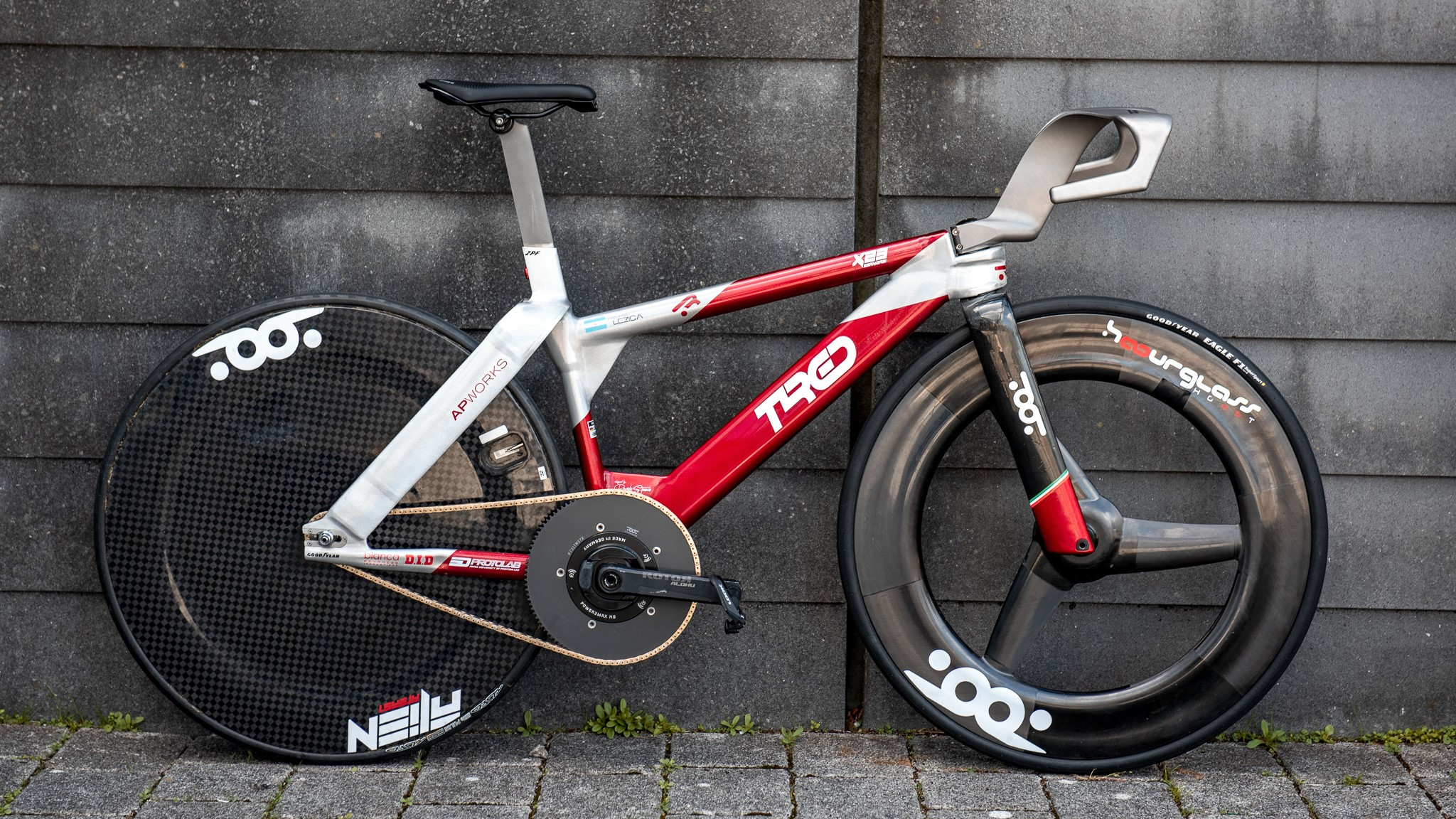
Track bike frame design seems to have broken new ground over the last few years, with designs becoming wilder and more outlandish than ever before, which we assume is in no small part due to the more relaxed UCI tube profile rules.
Hope and Lotus released their striking track bike effort for Team GB back in 2020 and recently announced a radical new version in the run-up to the Paris Olympics next year. We also recently uncovered new machines from Look and BMC at the velodrome during the Glasgow Worlds Championships.
We got to check out another couple of striking track bikes at the velodrome this week in the form of team Argentina's TRED X23 Swanigami. We covered this project and the development of the bike back in May, and you can read lots of the technical details in that piece. Fast forward a few months though and the X23 is being raced at the World Championships.
The standout feature of the bike is the frankly mind-blowing handlebar and stem setup, alongside a tiny angular frame and disc and tri-spoke wheel combination. The bike is 3d printed aluminium alloy and steel and though it bears the brand name 'TRED', the design is borne out of the collaboration between Toot Engineering, University of Pavia with Computational Mechanic Lab and 3DProtoLab, with Toot Engineering's head of research (and TRED founder) Romolo Stanco at the centre.
Cyclingnews Editor Peter Stuart managed to get some shots of a completed model at the Sir Chris Hoy Velodrome in Glasgow.
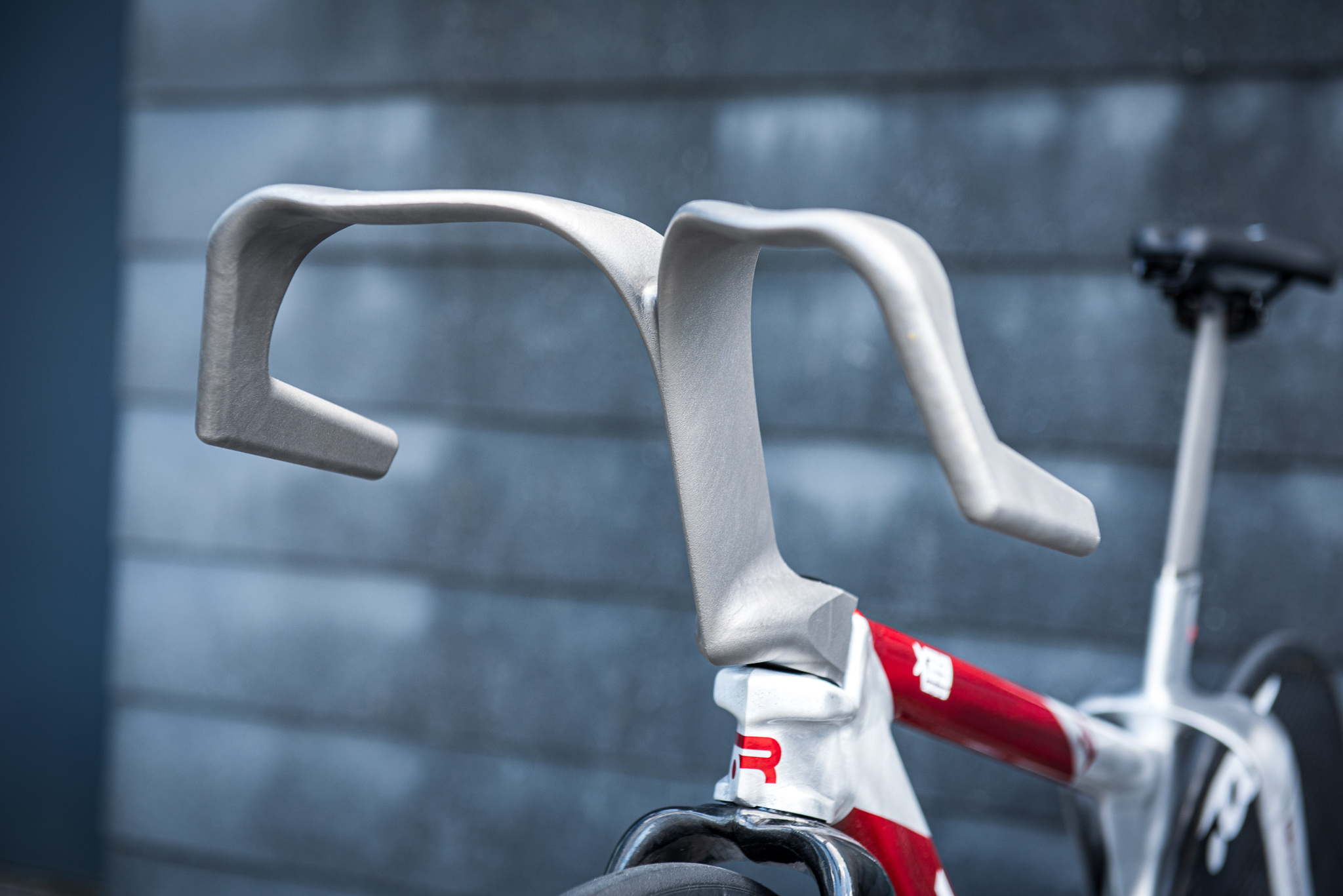
In a statement provided to Cyclingnews by Toot Engineering general manager Erica Marson, the brand says the frameset will be manufactured through an 'additive manufacturing technique' using an 'aerospace grade aluminium alloy called Scalmalloy, printed by a company called APWorks.
Other components are 3D printed in titanium or steel, such as the high-rise handlebar shown above.
The latest race content, interviews, features, reviews and expert buying guides, direct to your inbox!
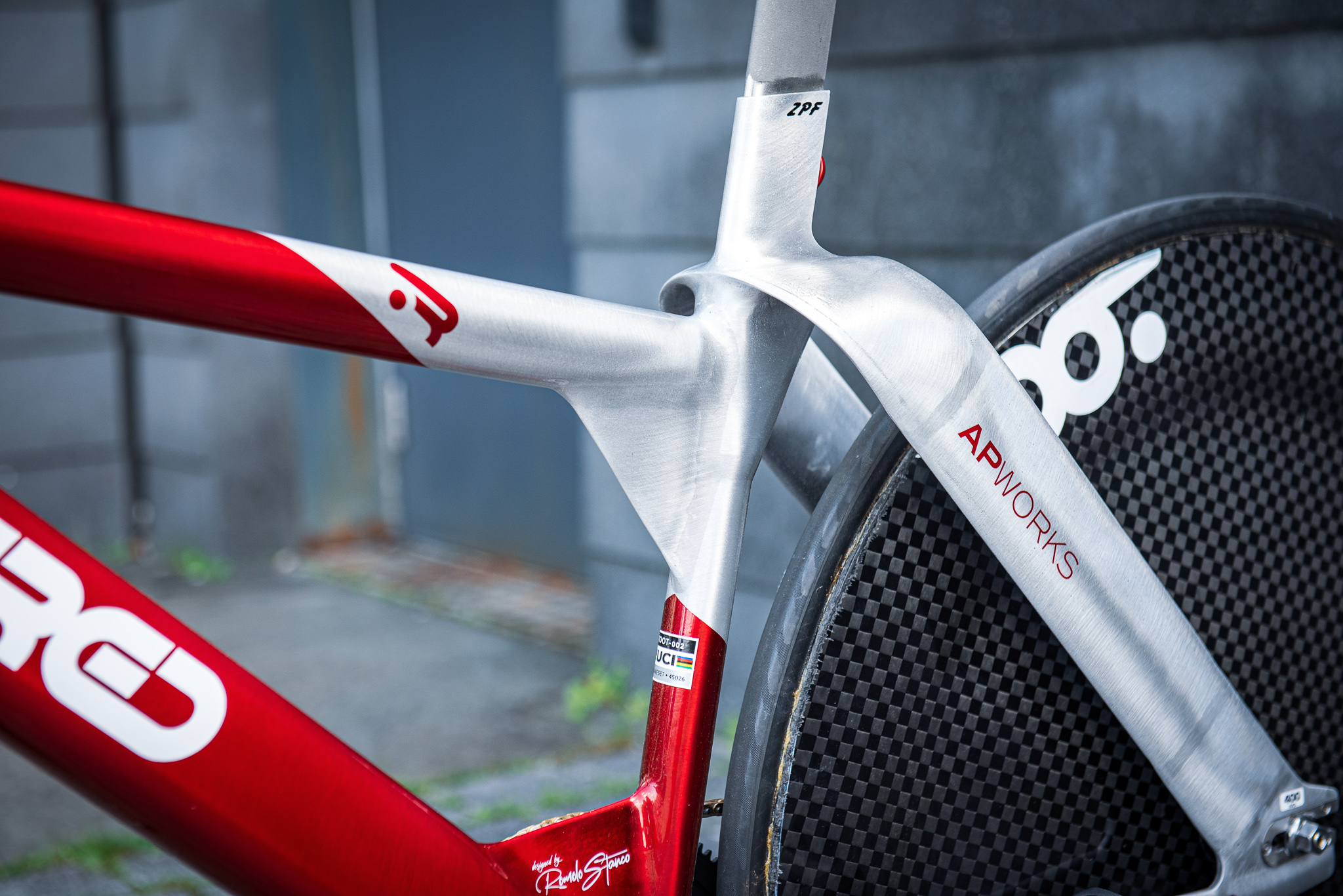
To our untrained eye, we presumed the triangular add-ons in the frame were simply strengthening features, but Marson explained their purpose...
"The shapes of the X23 frame in the front triangle are designed around the search for an aerodynamic effect called 'washout,'" Marson continued. This is described as "a feature which deliberately reduces the distribution of the lift, therefore of the load, of the aerodynamic weight."
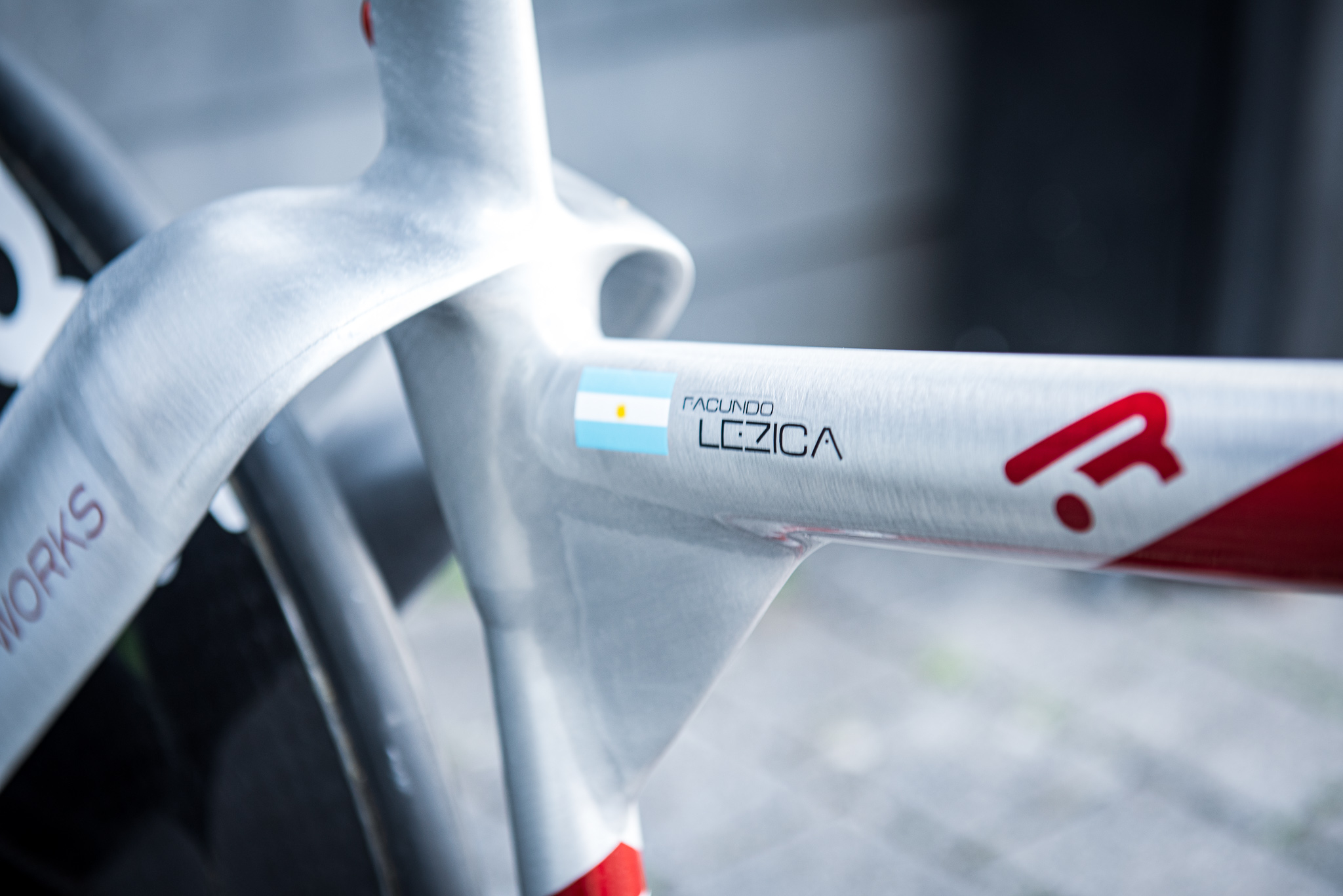
The concept and the design considers both the rider and the bike as one aerodynamic puzzle to solve, rather than two separate puzzles that come together. This is something more and more brands have been focussing on in recent years, with varying ideas on how to approach it.
Marson says the Toot Racing approach allows "the athlete’s body to be 'used' as a wing by directing the flow of air passing under his [or her] chest where best to relieve the air pressure," later likening it to the foiling effect seen on deep tubes kammtail tubes and more prominently in sailing.
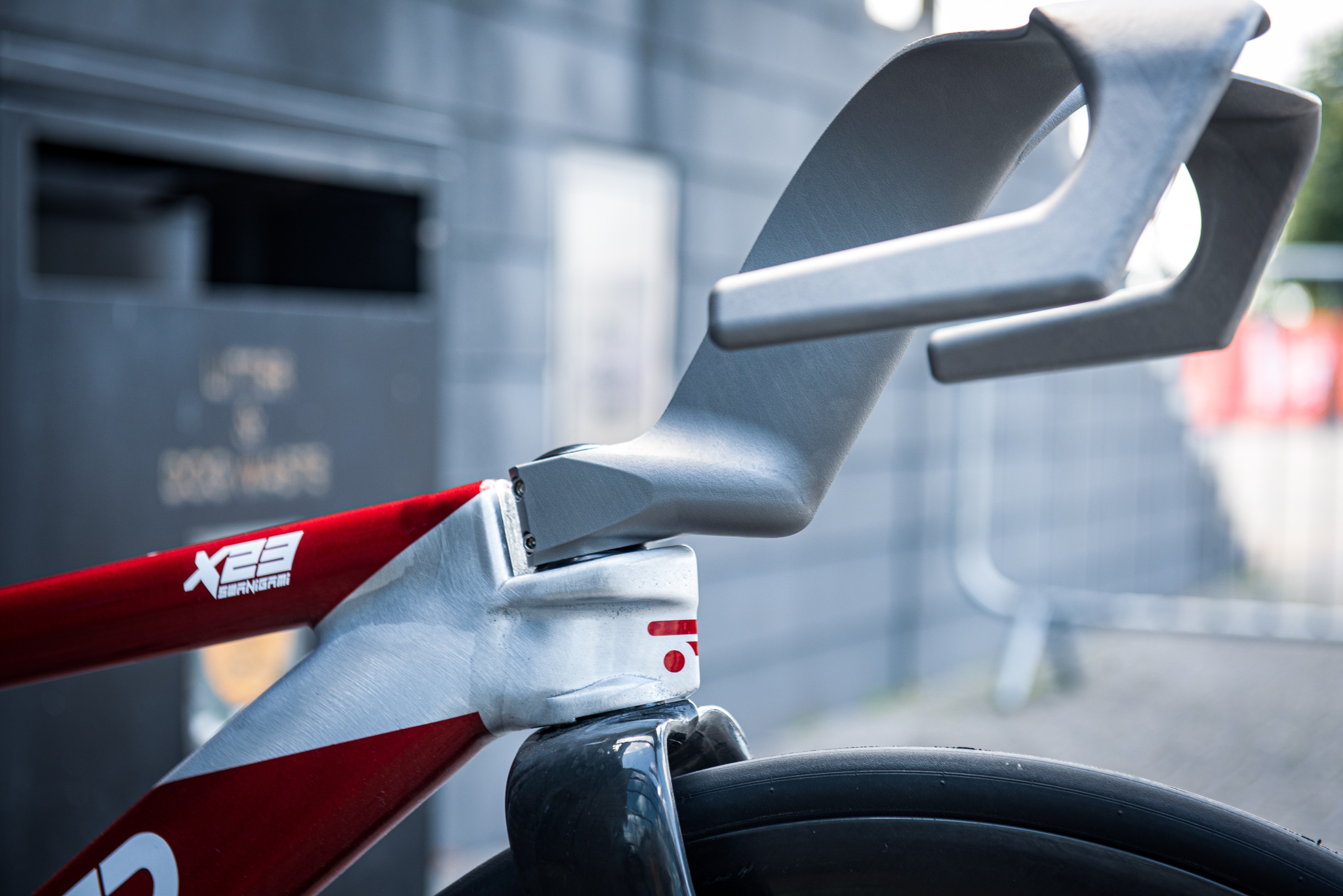
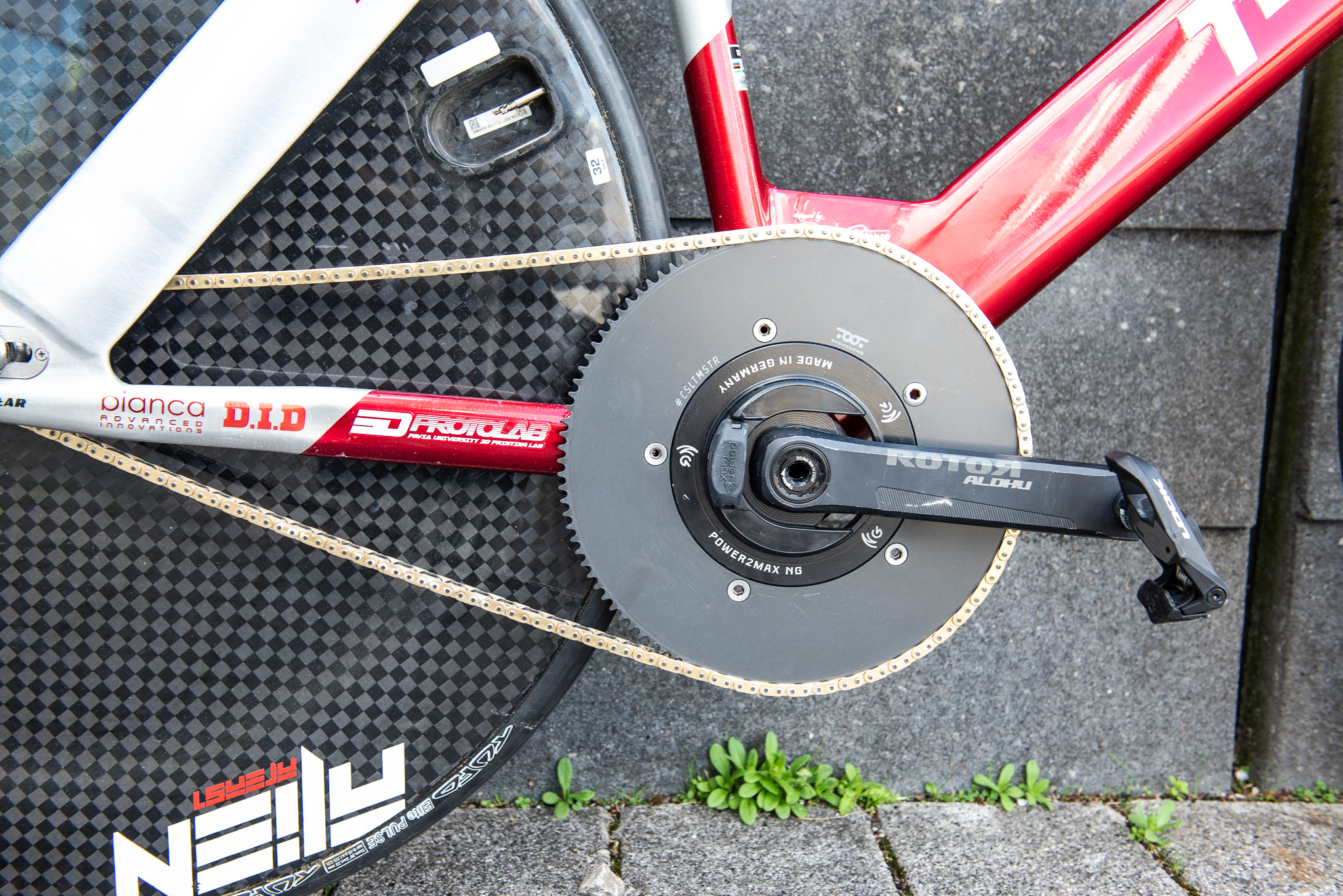
TRED founder Stanco's research led him to create a new drivetrain for the bike, too. He sourced the narrow-pitch chainring and sprocket from Hungarian brand Csoltmester, and collaborated with Italian motorcycle chain company DID to design a suitable chain.
On this bike, the chainring has a staggering 109T, paired with a 27T cassette. However, due to the narrow pitch, this is equivalent to a still-enormous 68T x 17T (on a standard pitch chain with a 23mm tyre).
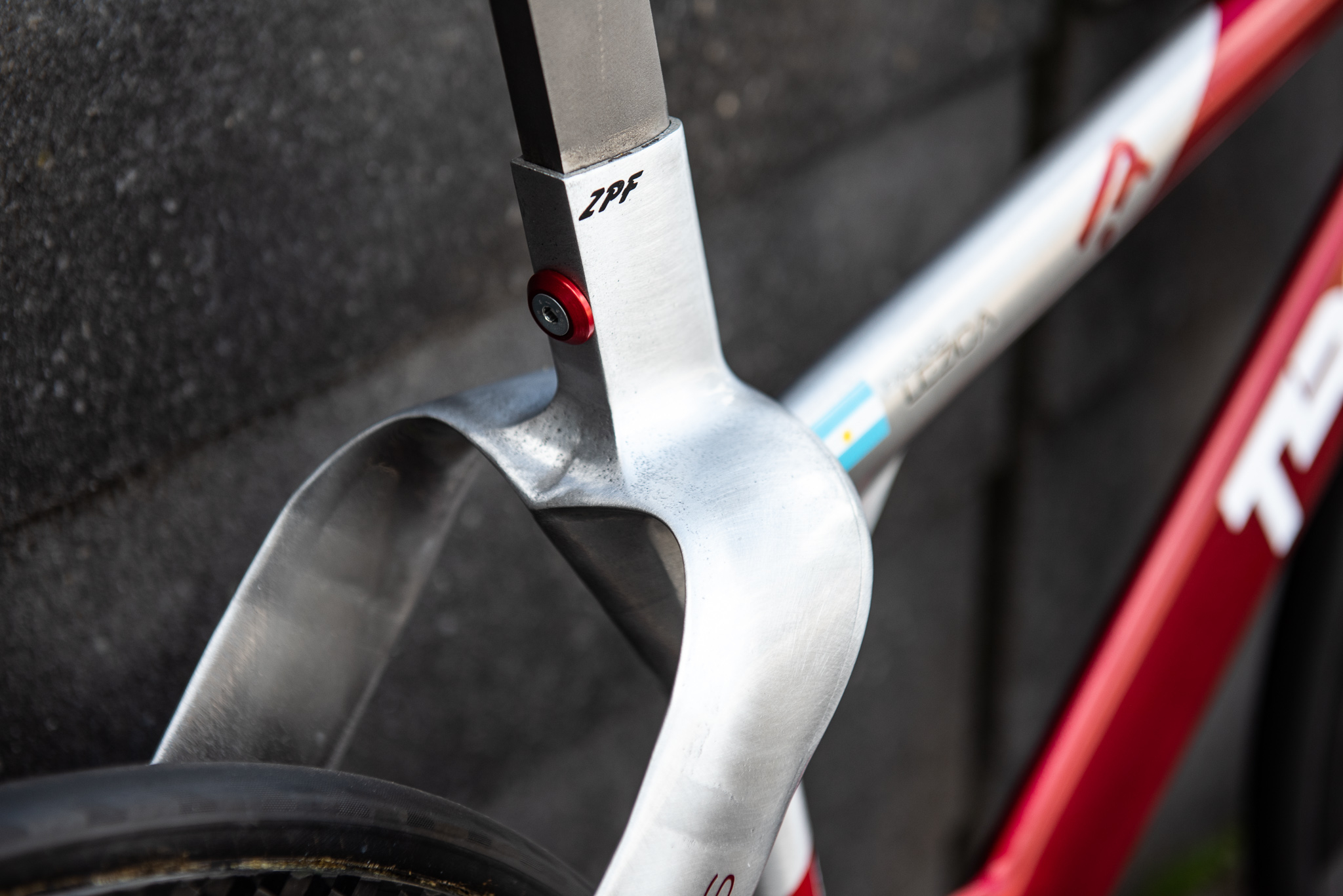
A second machine, called 'THEFALCON 387'
We also snapped a second bike, which we're told is called THEFALCON 387, and dare we say, it looks a little bit more conventional than the bike featured above.
The key standout here is that this bike doesn't have the radical integrated handlebar and the frame is slightly - albeit not much - more conventional in appearance.
T-RED and Toot are said to have a road bike in the works so watch this space. If the track bikes are anything to go by it promises to be eye-catching at the very least.
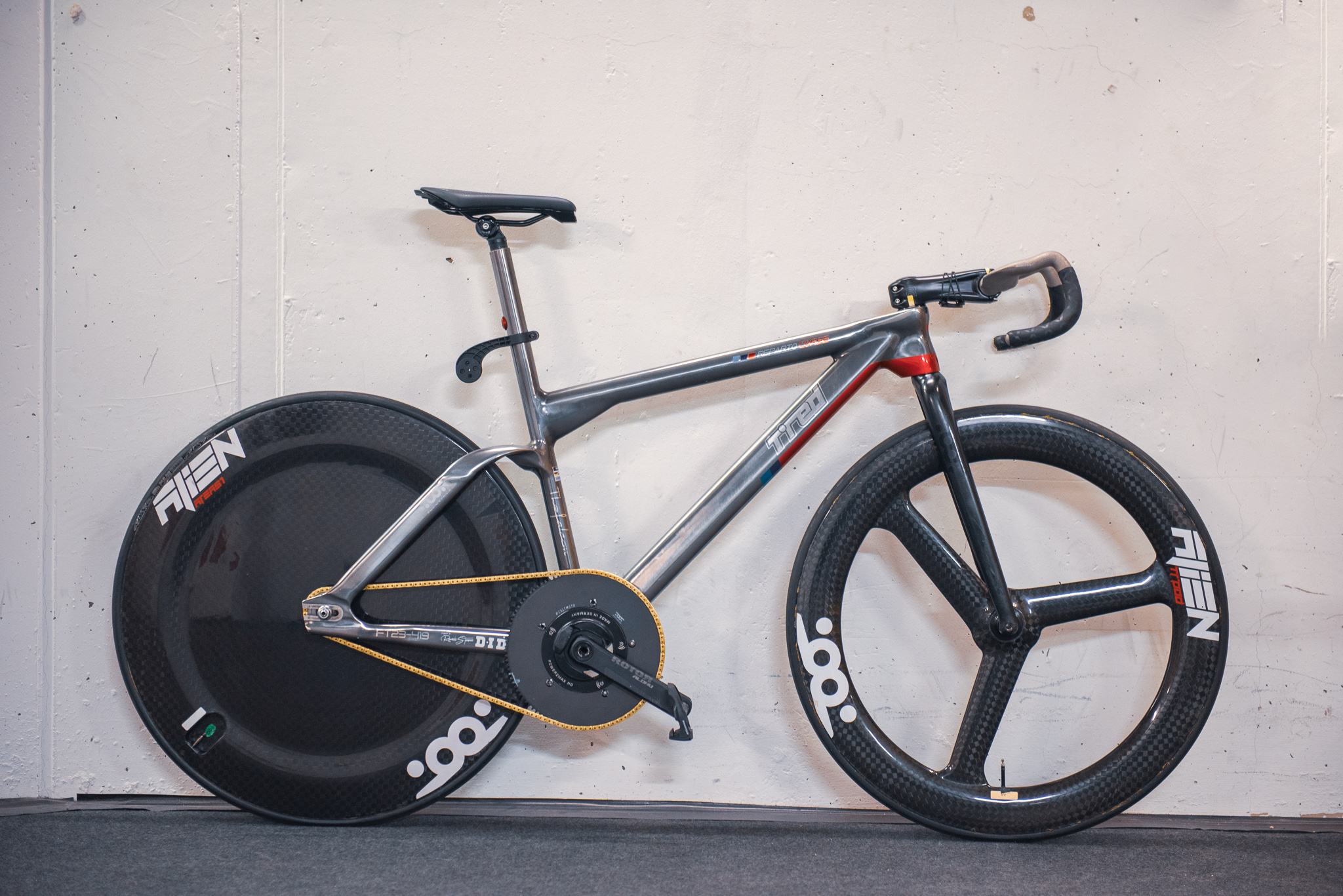
Alongside 'Scalmalloy,' the construction of this bike is also made using a material with an even more unusual name: AlScaZir.
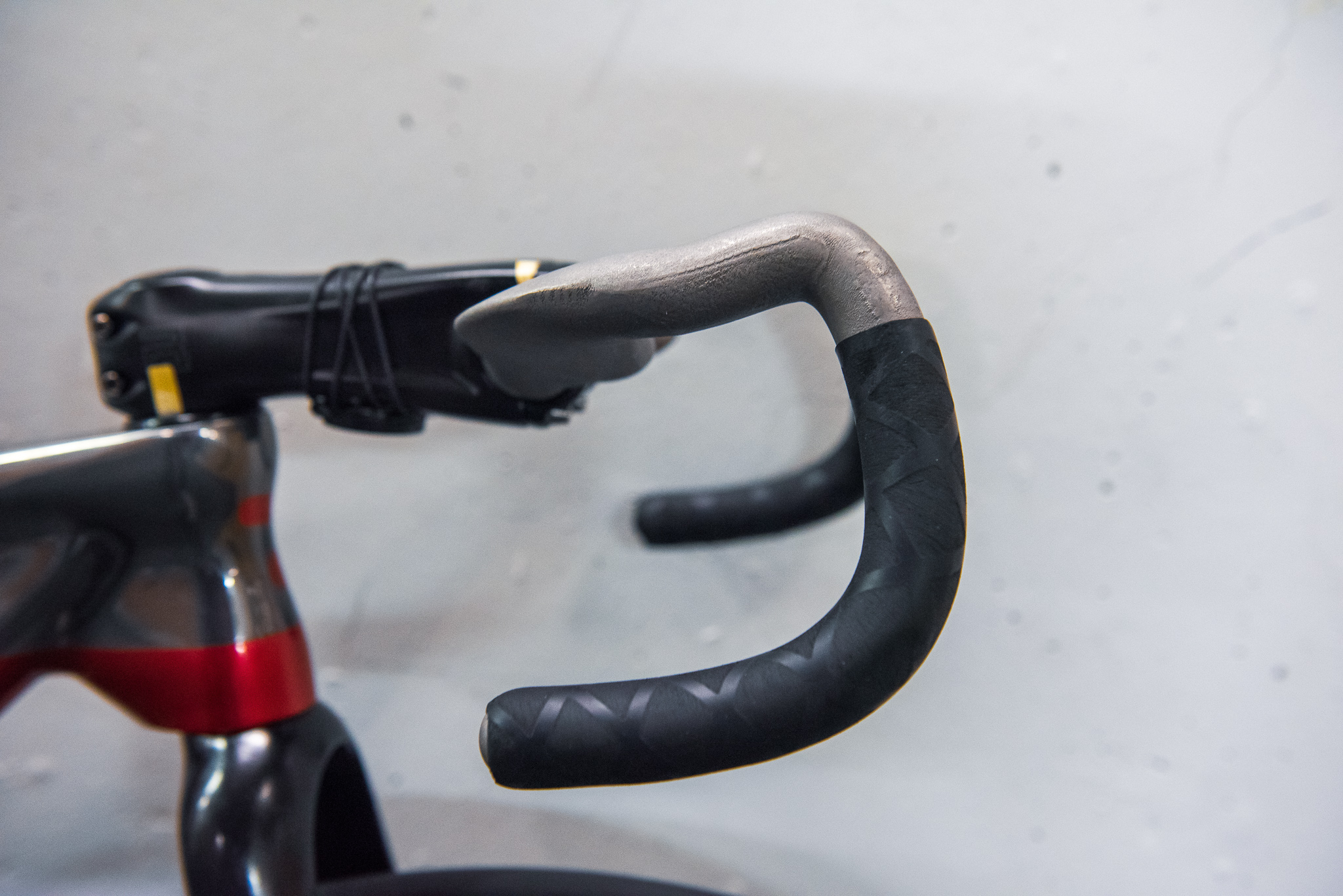

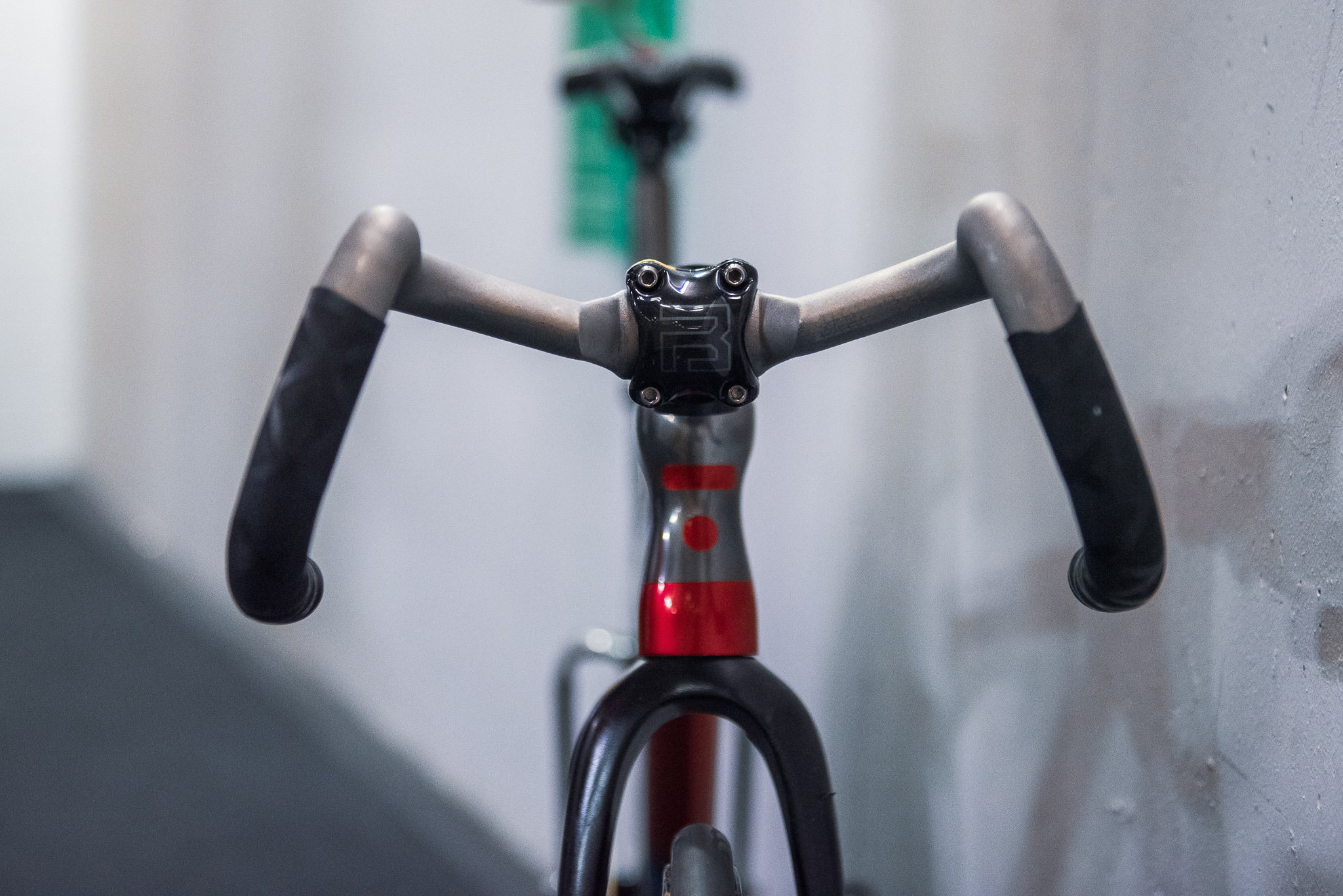
A post shared by Cyclingnews (@cyclingnews_feed)
A photo posted by on

Tom joined the Cyclingnews team in late 2022 as a tech writer. Despite having a degree in English Literature he has spent his entire working life in the cycling industry in one form or another. He has over 10 years of experience as a qualified mechanic, with the last five years before joining Cyclingnews being spent running an independent workshop. This means he is just as happy tinkering away in the garage as he is out on the road bike, and he isn’t afraid to pull a bike apart or get hands-on with it when testing to really see what it’s made of.
He has ridden and raced bikes from an early age up to a national level on the road and track, and has ridden and competed in most disciplines. He has a keen eye for pro-team tech and enjoys spotting new or interesting components in the wild. During his time at Cyclingnews, Tom has already interviewed some of the sport's biggest names including Mathieu van der Poel, Tadej Pogačar and Alberto Contador. He's also covered various launches from brands such as Pinarello, Ridley, Specialized and more, tackled the Roubaix Challenge sportive aboard his own rim-brake Cannondale SuperSix Evo, tested over 20 aero helmets in the wind tunnel, and has created helpful in-depth buying advice relating to countless categories from torque wrenches to winter clothing.
